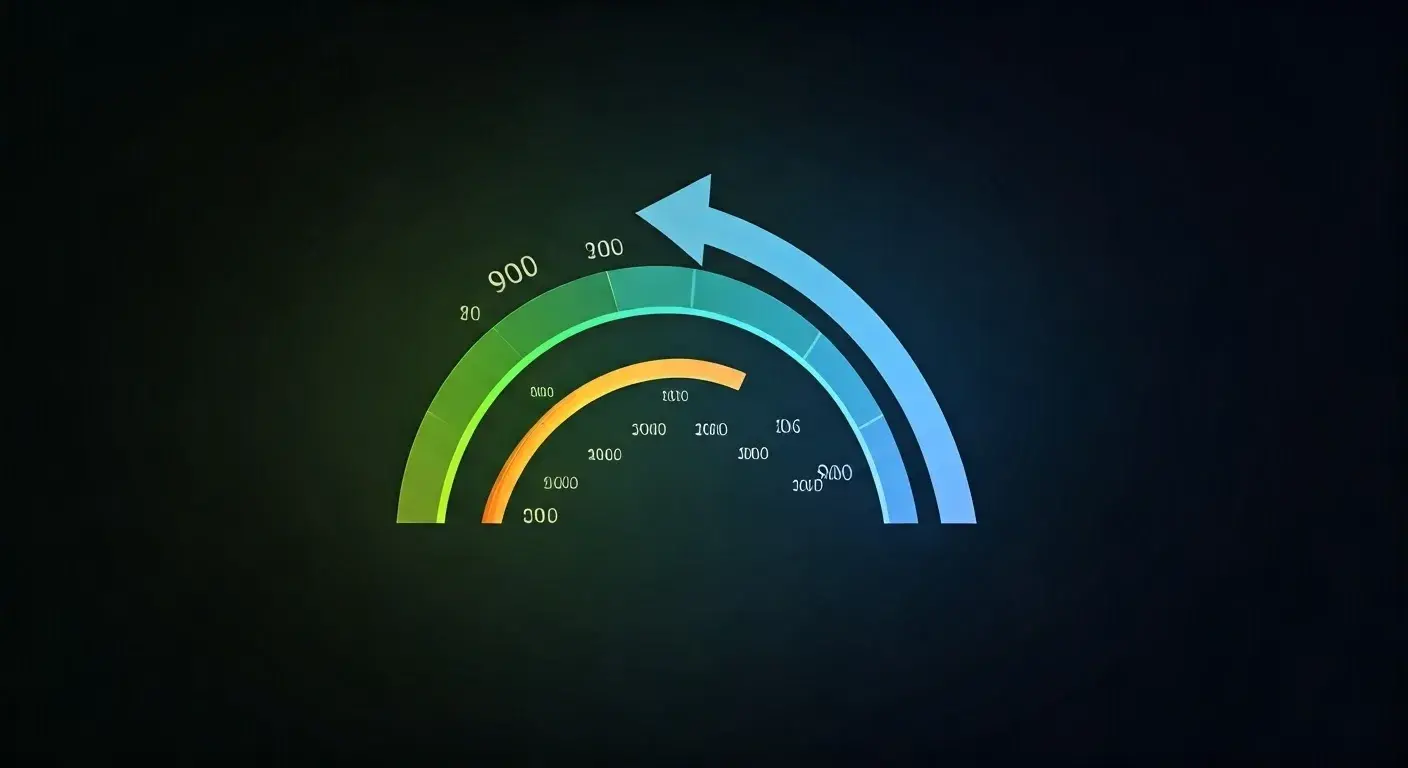-
Posted on: 31 Jul 2024
-
Receiving a credit card offer with a $20,000 credit limit can feel like winning the lottery. It opens doors to larger purchases, provides a significant financial cushion, and seemingly offers more freedom. But is a $20,000 credit limit actually "good"? The answer, like most things in finance, is: it depends. This article explores the factors that determine whether a $20,000 credit limit is right for you, the potential benefits and drawbacks, and how to manage it responsibly.
Understanding Credit Limits: The Basics
A credit limit is the maximum amount of money a credit card issuer allows you to charge on your card. It's essentially a short-term, unsecured loan extended to you based on your creditworthiness. Several factors influence the credit limit an issuer is willing to offer.
Factors Influencing Your Credit Limit
- Credit Score: Your credit score is a primary determinant. A higher score (typically above 700) signals lower risk and increases your chances of a higher credit limit.
- Credit History: A long and positive credit history, with on-time payments and responsible credit utilization, is highly valued.
- Income: Your income demonstrates your ability to repay your debts. Higher income often translates to a higher credit limit.
- Debt-to-Income Ratio (DTI): DTI compares your monthly debt payments to your gross monthly income. A lower DTI suggests you're less burdened by debt and are more likely to manage a higher credit limit responsibly.
- Payment History: A history of missed payments, defaults, or bankruptcies will significantly reduce your chances of getting a high credit limit.
- Relationship with the Issuer: If you have a long-standing relationship with the credit card issuer and have a history of responsible credit use with them, they might be more willing to offer a higher limit.
Is $20,000 Above Average?
While individual credit limits vary widely, a $20,000 credit limit is generally considered to be well above average. The average credit card limit in the United States falls somewhere between $5,000 and $10,000. Securing a $20,000 limit typically requires an excellent credit score, a substantial income, and a strong credit history. It indicates a high level of trust from the credit card issuer.
The Potential Benefits of a High Credit Limit
A $20,000 credit limit offers several advantages if managed responsibly:
- Increased Purchasing Power: Allows for larger purchases, such as furniture, appliances, or travel expenses, without needing to apply for additional credit.
- Lower Credit Utilization Ratio: Credit utilization ratio (CUR) is the amount of credit you're using divided by your total available credit. A lower CUR (ideally below 30%) is crucial for maintaining a good credit score. A $20,000 limit makes it easier to keep your CUR low, even with significant spending. For example, spending $2,000 on a $20,000 limit results in a CUR of 10%, while the same spending on a $5,000 limit results in a CUR of 40%.
- Emergency Fund Alternative: Provides a financial safety net for unexpected expenses like medical bills or car repairs, reducing the need to dip into savings.
- Rewards and Benefits: High-limit credit cards often come with more generous rewards programs, such as higher cashback rates, travel points, or exclusive perks.
- Improved Credit Score (Potentially): Responsible use of a high-limit card can contribute to a positive credit history and improve your credit score over time. This is primarily due to the positive impact on your credit utilization ratio.
The Potential Risks of a High Credit Limit
While a $20,000 credit limit offers many benefits, it also presents significant risks if not handled with discipline:
- Overspending and Debt Accumulation: The high limit can tempt you to spend more than you can afford, leading to debt accumulation and high interest charges.
- Difficulty Repaying: Large balances can be difficult to repay, potentially leading to missed payments, late fees, and damage to your credit score.
- Increased Risk of Identity Theft: A high-limit card could result in substantial losses if your account is compromised due to fraud or identity theft.
- Impact on Future Credit Applications: While a low CUR is good, having a significantly large credit limit compared to your income might raise eyebrows with lenders when you apply for other loans, such as a mortgage. They might see you as a higher risk.
How to Manage a $20,000 Credit Limit Responsibly
If you have a $20,000 credit limit, here are some strategies for managing it responsibly:
1. Create a Budget and Stick to It
Develop a realistic budget that tracks your income and expenses. Use your credit card for budgeted purchases and avoid impulse buys.
2. Keep Your Credit Utilization Low
Aim to keep your credit utilization ratio below 30%. Ideally, try to keep it even lower, perhaps around 10%. This means spending no more than $6,000 on a $20,000 limit (and preferably less, around $2,000).
3. Pay Your Balance in Full Every Month
The most effective way to avoid interest charges and build a positive credit history is to pay your balance in full by the due date each month. Set up automatic payments to avoid missing deadlines.
4. Monitor Your Credit Card Statements Regularly
Review your statements for unauthorized transactions or errors. Report any discrepancies to your credit card issuer immediately.
5. Avoid Cash Advances
Cash advances typically come with high interest rates and fees. Use your credit card for purchases instead of withdrawing cash.
6. Resist the Urge to Max Out Your Credit Limit
Even if you have a $20,000 credit limit, avoid the temptation to max it out. This can negatively impact your credit score and lead to financial stress.
7. Consider Setting Up Alerts
Set up alerts for unusual spending activity or when your balance reaches a certain threshold. This can help you stay on top of your spending and prevent overspending.
8. Regularly Review Your Credit Report
Check your credit report at least once a year to ensure accuracy and identify any potential issues or fraudulent activity. You can obtain free copies of your credit report from AnnualCreditReport.com.
When a $20,000 Credit Limit Might Not Be a Good Thing
Even with responsible management, there are situations where a $20,000 credit limit might not be ideal:
- If You Struggle with Impulse Spending: If you have a history of overspending or difficulty controlling your spending habits, a high credit limit could exacerbate the problem.
- If You're Currently in Debt: If you're already struggling to manage existing debt, adding a high-limit credit card could compound your financial difficulties.
- If You Don't Need It: There's no need to have a $20,000 credit limit just because you can get one. If you consistently spend well below that amount and don't need the extra purchasing power, a lower limit might be more appropriate.
Requesting a Lower Credit Limit
If you're concerned about the potential risks of a $20,000 credit limit, you can contact your credit card issuer and request a lower limit. While it might seem counterintuitive, reducing your credit limit can be a responsible financial decision. Lowering your limit can help you control your spending and reduce the temptation to overspend.
Alternative Strategies for Building Credit Responsibly
If you're looking to build credit without the risks associated with a high-limit credit card, consider these alternative strategies:
- Secured Credit Card: Requires a security deposit, which serves as your credit limit. Responsible use can help you build credit.
- Credit-Builder Loan: A small loan designed to help you build credit. You make regular payments, and your payment history is reported to credit bureaus.
- Become an Authorized User: Ask a trusted friend or family member with a good credit history to add you as an authorized user on their credit card. Their responsible use can help you build credit.
Conclusion: Is $20,000 a Good Credit Limit for You?
A $20,000 credit limit can be a valuable financial tool, offering increased purchasing power, lower credit utilization, and access to rewards. However, it also carries the risk of overspending, debt accumulation, and potential fraud. Ultimately, whether a $20,000 credit limit is "good" depends on your individual financial habits, self-discipline, and ability to manage credit responsibly. If you can consistently make on-time payments, keep your credit utilization low, and avoid overspending, a $20,000 credit limit can be a significant asset. However, if you struggle with financial discipline, a lower credit limit or alternative credit-building strategies might be more appropriate.











